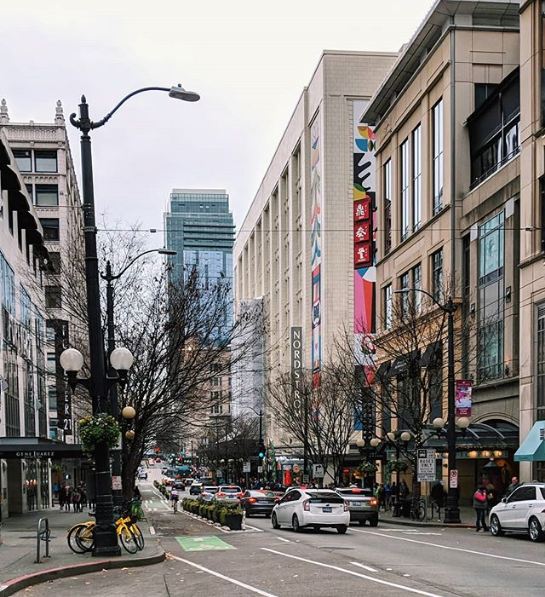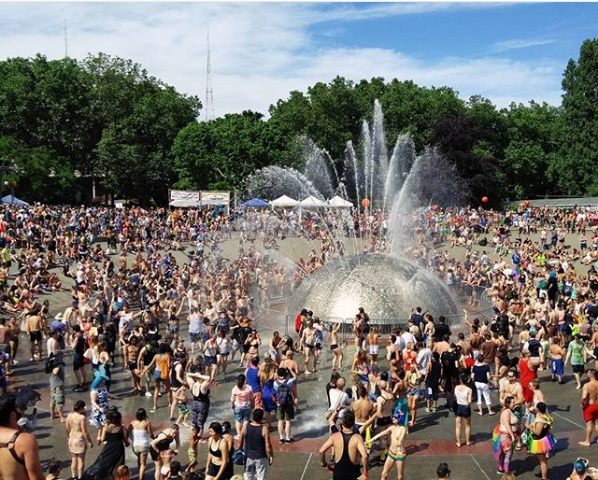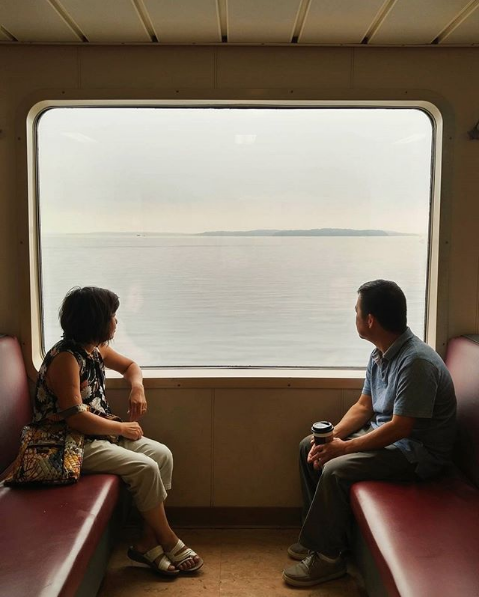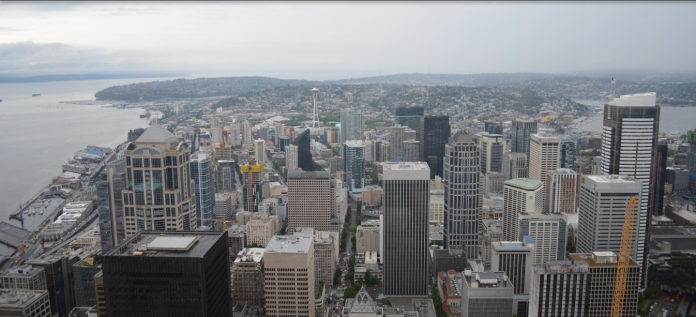The idea of “home” came to the foreground when I moved to Seattle from the greater Detroit area where I was born and raised, wrestling to make Seattle my new home. I often refer to Michigan as “home home” and I am reflective on how I engage and identify with the city I now call “home.”
As a recent transplant in Seattle, I am struck by how many of my social encounters involve other transplants. Looking at the numbers, this makes sense: Seattle is currently the fastest growing big city in the country, with a population increase of 3.1% from 2015-2016, or about 21,000 people (a notable increase from the 2.3% growth from 2014-2015, or about 15,000 people). Moreover, the Seattle metropolitan area is the ninth-fastest growing in the nation, with an estimated 1,100 new residents per week in 2016. Many of these transplants arrive from outside of Washington state, including over 16,000 Californian transplants alone in 2016.
I am also struck by how many introductions and conversations refer to the topic of Seattle as home. Conversations frequently include how permanent of a home Seattle is, if the Seattle identity is a good fit, and if one is actually from Seattle. Reasons for moving to the city ranged from professional opportunities, personal reasons, and preference of location.
In studying architectural atmospheres and genius loci, there is more to understand about how people connect to place on an emotional and corporeal level. Buildings connect with their environment and produce a phenomenological experience of identity with place, consequently contributing to a sense of home.
So what exactly makes a city or a place a home for people—especially for those who move around? What are the experiences, features, and opportunities that facilitate that connection? Moreover, if architectural atmospheres can be produced, what are guiding principles to consider in city planning?
The process of finding home varies greatly depending on the population demographic in question. There are also social factors that influence this topic, such as race and class. The larger context of “home” is more than what I had time to study. For this project, I interviewed five participants who currently live in the Capitol Hill neighborhood of Seattle and are under the age of 35, both transplants and natives.
Each interviewee had a unique story and set of experiences. In varying degrees of success and enjoyment, they are all currently making Seattle a home. From the interviews, I gleaned three core themes that are important to both the process of finding home and what makes a city, a place, or a neighborhood feel like home.
Theme 1: Autonomy and the everyday
We exist in the rituals, routines, and practices of our everyday lives: It is by establishing the everyday that we make a place a home. Interviewees talked about commuting to work, scheduling appointments, running errands, and going to their third place as important parts of home. These practices are the root of how people live and therefore are essential to feeling grounded in and connected to their city.
The identity with place from the everyday is emboldened by a sense of autonomy. Interviewees talked with pride and ownership about these ordinary routines, often framing them as my favorite store, my bus ride to work, and my doctor’s office. One interviewee shared a sentiment of pride being able to tell visitors about their favorite coffee shop and show them their life in Seattle. They said being able to share these parts of their identity with Seattle helped make the city feel like their home.

On the other hand, the lack of autonomy weakens identity with place. For example, many interviewees expressed an estranged connection to their “home home” because family and adolescence often shadow those experiences. The routines from living with family were less of their own conscious autonomous decision and more aligned with the expectations of adolescents growing up.
Similarly, a place where you lose the ability to define yourself, or where others define you, does not facilitate a connection to home. For example, one interviewee shared how life in a previous city became unfavorable after a traumatic incident. Their routines and rituals became tainted with derision from others, and the lack of autonomy in their identity with that city no longer made it feel like home, ultimately pushing them to move away.
Theme 2: People, culture, and identity
Home is a personal and intimate experience, but the process of finding home cannot be separated from the other people that contribute to it. As each individual goes about rooting their identity with place through the business of everyday life, these experiences collectively produce the urban atmosphere that influences how people relate to one another. This collective experience is the foundation for the sense of community that makes a place feel like home.

Interviewees expressed that people around them are important in making a place feel like home. While sharing previous or other places where they find “home,” they talk about the people they encounter. One interviewee brought up how the people in Sydney were friendly and made them comfortable when they visited, which made the city instantly feel like home. Another interviewee talked about the people in their favorite brewery in Miami that made it an inviting space where they felt at home. Another interviewee talked about the clerk at the grocery store recognizing them. Interviewees described these rapports with words such as “warm” and “belonging.” On the other hand, not having those affirming connections to people makes it more difficult to feel at home. One interviewee reflected on their struggles relating to people in Seattle as a barrier to making the city feel like home.
When asked about experiences of making Seattle their home, interviewees brought up various cultural and social cues that they have noticed about people in the area. Examples include a left-leaning political environment, meeting “outdoorsy” people, and their experience with the “Seattle Freeze” — a vaguely defined phenomenon characterized by the impossibility of sustained social relations. This Seattle identity is frequently talked about and often explicitly defined, such as in the Seattle Times NW Magazine piece jauntily titled: “If you weren’t born in Seattle or the Northwest, you’ll never be one of us.” Interviewees talked about how well they fit in with the culture and the identity here, attributing it to how they relate to the city. The more they identified with the Seattle identity, the more they felt at home.
As personal as finding home is, other people and how one relates to them heavily influence that experience. People together create the collective identity of a place, and finding home is akin to finding one’s connections to that collective. Without that social affirmation, there is no sense of community; and with no sense of belonging to community, there is no feeling of home.
Theme 3: Geography
Interviewees described a visceral feeling when a city starts to feel like home; it’s hard to put your finger on it. Something quickly comes to mind, but they might not have a full comprehension of why they have that feeling or what in particular that thing is. While ambiguous, there are general aspects of a place that people can think of which allude to the feeling of home.

When asked what they enjoy about living in Seattle, geography is an important factor. Interviewees all talked about the natural landscape, including the proximity to bodies of water and the mountainous terrain that surrounds the area. The domineering natural landscape is a visual anchor in their identity with the city, and creates a sense of place that helps interviewees feel at home. In addition, the urban built environment also influences how they relate to place. Some interviewees shared that they enjoy the scale and feel of the city. For example, one interviewee expressed appreciation for the residential feel of Capitol Hill that makes them feel more welcomed than a place like Chicago that has an increased density of towering high-rises. These unique natural and urban geophysical features are important identifiers that influence our connection to place as home.
Interviewees also shared how they enjoy the feeling of endless exploration that Seattle has to offer. They reported that there is always more to see, even if they have lived here for a longer period of time. This prevents feeling as if they are too big for the city or bored with where they live. Interviewees also see that endless exploration as exciting rather than daunting or tiring. They expressed comfort in the balance of living in the more defined everyday routine and the greater experiences they have yet to discover. They feel grounded in the immediate ordinary practices of everyday, but thrive in knowing there is more out there.
These responses align with other studies on place and architectural atmospheres. Cities like Prague are known to have a strong sense of place with its unique and alluring architecture, as well as the feeling of an “endless ‘inside’”. The city inspires a particular feeling that is visceral, much like what interviewees reported they felt that moment a city felt like home to them. Interviewees had difficulty identifying precisely what it is about Seattle’s geography that made it so alluring to them, as often the appeal does not come to us in language but rather through its impression. At best, they mentioned the mountains, the water, and the low-rise developments as parts of Seattle that make it feel like home.
Lessons Learned
The interview itself appeared to be cathartic for interviewees. Many expressed appreciation for the opportunity to share their experiences on the topic—perhaps one not talked about enough. Affirmation of their experiences proved comforting. While they did not get answers on how to make a place feel like home during the interview, being able to talk about what that feels like eased that isolation and sparked new revelations.
I also learned a lot from the interviews, discovering new conceptual frameworks. For example, one interviewee brought up Dunbar’s number. Whereas creating a social network in a new city might mean meeting a lot of new people, Dunbar would argue there is a limit to the number of meaningful social connections we can maintain—the type of connections that are pertinent in making a place feel like home. For one interviewee, their experience finding home centered on the quality of their social circle rather than investing effort to bulk its size. Another related their experience in Seattle to the ideas in the book “The Opposite of Loneliness,” and how it influences their approach to building community while feeling alone.
One interesting finding that could serve as a later study is the connection of the individual to the collective concerning cultural identity and belonging. All interviewees talked about their experiences connecting with others in Seattle compared to other places, as well as connecting with others originally from Seattle compared to transplants. Yet, as interviewees talked about the Seattle identity, there was little to no mention about their individual contribution to that greater collective. The urban atmosphere and culture is the collective of people going about their everyday lives, yet interviewees expressed no responsibility in co-creating this greater culture in which they partake. They saw the Seattle identity as something they approach, not something they create. As Seattle’s population is projected to rapidly grow over the next couple of years, it will be interesting to examine how the influx of transplants will influence this culture and identity—and perhaps even redefine it.
Understanding how people identify with place is becoming increasingly relevant given current events today, both in and outside of Seattle. The refugee crisis, for example, is stirring political discourse about how to create welcoming new homes vis à vis mass immigration. Gentrification is another example, and how it strains people’s relation to their home and how they identify with their neighborhood. It is important to gain a better understanding of what finding home is like so that cities not only attract, but also retain residents—so that cities can focus on becoming livable places that people desire.
Planners can make an educated guess about what people like in their city, but it is important to listen to the meandering narratives of how people understand place—to listen from the bottom-up and focus on what impacts people on a personal level. As interviews and research have affirmed, finding home is an experience that will look different for every individual. Important to that experience is the autonomy in the everyday routine, finding community in people, and the sense of place from unique urban and natural geophysical identifiers.
And while planners cannot fully control the experience of finding home for people, they can influence that process and encourage a deeper connection of people to place. This includes creating spaces that facilitate better opportunities for social encounters such as shared public spaces and community facilities, diversifying the availability of enjoyable third places that cater to different tastes, keeping the city lively with things to do, and capitalizing on the geophysical identifiers that many people enjoy.
Many initiatives could seek to make a city more of a home for its residents new and old. As this project has shown, even talking about this experience is helpful. They say home is where the heart is, and talking about home would make it just a little bit easier for the heart to know where home is.
This piece is adapted from Kevin Chung’s website. For more photos like the above follow him on Instagram at @misterkchung.
Kevin Chung
Kevin Chung is a Seattle transplant. Born and raised in the greater Detroit area, he received his B.A. in global environment and health from the University of Michigan. He has called Capitol Hill home for the past two years. In his spare time, he enjoys traveling, exploring cities, and finding local coffee shops along the way.


